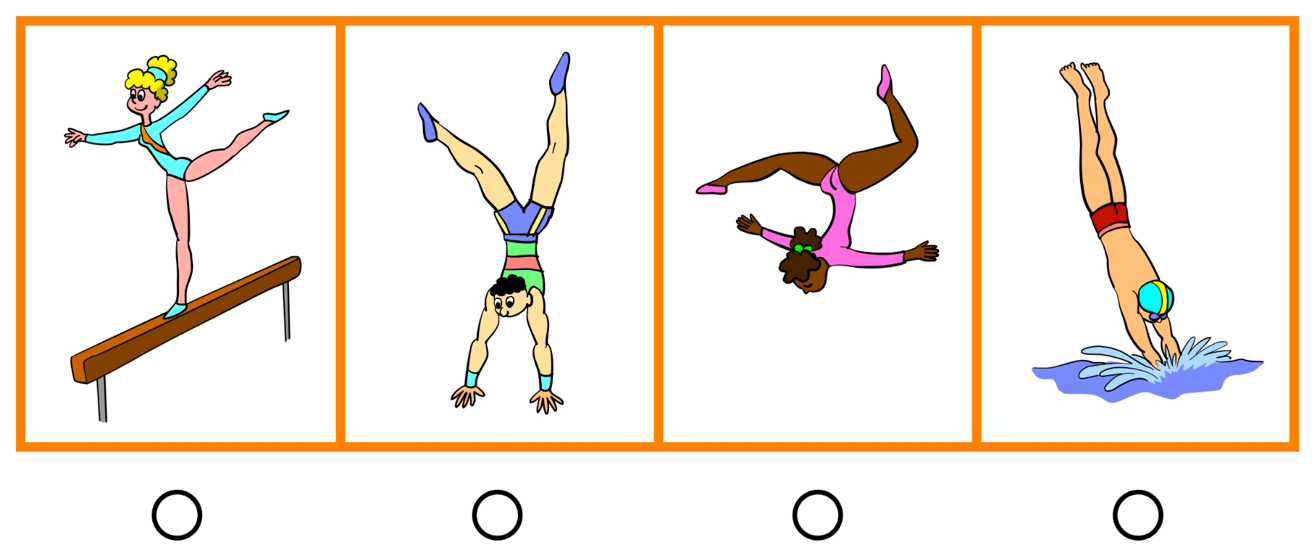The verbal reasoning section of the OLSAT test measures observation and comprehension of new situations and how apt conclusions are drawn. Comparisons are made between different words in order to understand their similarities or differences. This section evaluates a student’s ability to comprehend patterns, relationships and context clues in writing in order to solve a problem. Students must fully understand what the questions is asking, and they also need to be able to make inferences based on what they have read. It assesses a child’s ability to determine relationships between words, to observe similarities and differences, and to apply conclusions in different scenarios. Verbal Reasoning consists of aural reasoning, arithmetic reasoning, logical selection, word/letter matrix, verbal analogy, verbal classification and inference.
Aural Reasoning
This part of the test assesses the child’s ability to listen to, and understand, a question that is read aloud to them. These questions require the child to choose an answer based on inference/reasoning skills and information provided in the question.The questions focus on the ability to piece together and infer relevant information from smaller details to form an understanding of the bigger picture. Aural Reasoning is on levels A-C of the OLSAT, which covers Kindergarten through 2nd grade.
Sample Question:
Pat is very good at one sport. This sport does not include using a balance beam, turning a flip or doing a handstand. Choose the picture that shows the sport Pat is good at.


4 – Level B
Arithmetic Reasoning
These verbal problems incorporate mathematical reasoning. Some questions assess basic mathematical concepts, while others assess more sophisticated concepts such as reasoning and solving word problems. The main skill tested here is the ability to solve mathematical problems from language. These questions assess the child’s ability to use numbers in order to infer relationships, deduce computational rules, and predict outcomes. Arithmetic Reasoning is on levels A-G of the OLSAT, which covers Kindergarten through 12th Grade.
Sample Question:
Our family was shopping for a used car. We found one that cost $6700. The car dealer said we could pay for the whole thing in cash or pay $800 down and the rest in installments of $290 per month for 24 months on a payment plan. How much more will be paying if we choose the payment plan?
| $875 | $0 | $1060 | $960 |
| O | O | O | O |
Answer: #3-$1,060 more: $290 x 24 months= $6,960 + 800= $7,760 minus $6,700 = $1,060 – Level F
Logical Selection
In this section, students have to apply logical reasoning to discover the best answer. These questions require the students to consider which answer might be correct, versus which answer options are always correct. This distinction is key in answering these questions. These questions assess the ability to complete sentences and statements about everyday scenarios using simple logic. Logical Selection is on levels D-G of the OLSAT, which covers 3rd Grade through 12th Grade.
Sample Question:
The woman is not mean, but she inflicts pain several times per day. She wears gloves when she works so she doesn’t get blood on her hands.
- The woman is a killer.
- The woman is a phlebotomist.
- The woman is a pharmacist.
- The woman is a chemist.
Answer: b – A phlebotomist is a person who is trained to draw blood from a patient. Level E
Word/Letter Matrix
The word/letter matrix questions provide students with a matrix of letters or words, and the students must perceive the pattern or relationship among these words or letters in order to supply a missing letter or word. These questions test a child’s ability to fill in the missing piece of the puzzle. Word/ Letter Matrix is on levels D-G of the OLSAT, which covers 3rd Grade through 12th Grade.
Sample Question:
The following words fit together in a certain way. Choose the word that best fits in the blank.
words hyphen split
numbers _______ split
| hyphen | decimal | semicolon | multiply |
| O | O | O | O |
#2- “decimal” splits numbers and hyphens split words Level F
Verbal Analogy
These questions ask the students to consider the relationship between a pair of words, and then apply this relationship to another pair of words. Verbal Analogy is on levels D-G of the OLSAT, which covers 3rd Grade through 12th Grade.
Sample Question:
Scissors is to cut as straw is to ____.
| ground | water | drink | plastic |
| O | O | O | O |
Answer: 3 – Level D
Verbal Classification
In answering these questions, students must be able to evaluate the relationships among words or among concepts. Students must look at a series of words or concepts and identify which one does not fit with the others. Verbal Classification is on levels D-G of the OLSAT, which covers 3rd Grade through 12th Grade.
Sample Question:
What doesn’t belong?
| haiku | metaphor | couplet | alliteration | enumerator |
| O | O | O | O | O |
Answer: 5 – words related to poetry except #5 – Level E
Inference
These questions rely on a student’s ability to evaluate which parts of the provided information are absolutely necessary for reaching the correct conclusion. Students will be provided an argument or scenario and, based on the information provided, must determine the appropriate conclusion. Inference questions test the ability to infer the correct conclusion given a syllogism. A syllogism is a logical argument based on multiple propositions that are given and assumed to be true. Inference is on levels E-G of the OLSAT, which covers 4th Grade through 12th Grade.
Sample Question:
There can be no lies without –
| truths | facts | questions | answers |
| O | O | O | O |
Answer: 1 – Level E
